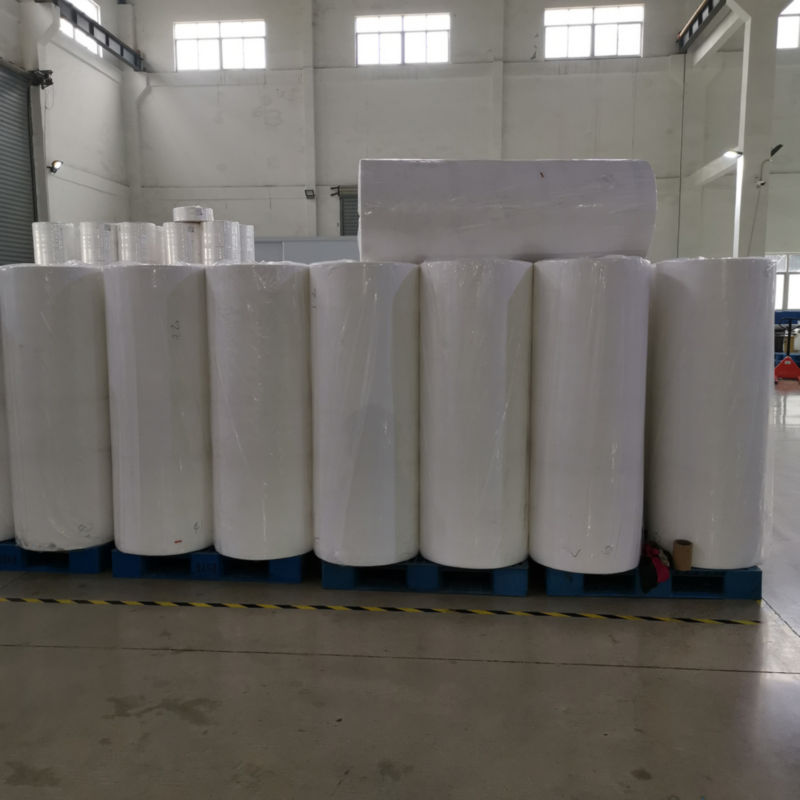البولي بروبلين (ص) spunbond nonwoven fabrics have become an essential component of various industries, including healthcare, hygiene, زراعة, and construction. China is one of the leading producers of PP spunbond fabrics, with its PP S spunbond fabric gaining popularity in the global market. This article explores the significance of China PP S spunbond fabric and its impact on the nonwoven industry.
Understanding PP S Spunbond Fabric
PP S spunbond fabric is a type of nonwoven fabric produced by the spunbond process. It is made from 100% polypropylene fibers that are spun and bonded together to form a web-like structure. PP S spunbond fabric is known for its excellent strength, متانة, and breathability, making it suitable for a wide range of applications.
The Role of China’s PP S Spunbond Fabric
China PP S spunbond fabric has become a key player in the nonwoven industry, with its high-quality and cost-effective production. The fabric finds applications in various sectors, such as medical gowns, surgical masks, diapers, مناديل, المنسوجات الأرضية, and automotive interiors. China’s PP S spunbond fabric has gained popularity in the global market due to its superior quality and competitive pricing.

Advantages of China’s PP S Spunbond Fabric
China has emerged as a major player in the production of PP (البولي بروبلين) س (سبونبوند) fabric. PP spunbond fabric refers to a nonwoven fabric made from continuous filaments of polypropylene fibers that are bonded together using heat and pressure. Here are some advantages of China’s PP spunbond fabric:
- Quality and Consistency: Chinese manufacturers have invested heavily in advanced technology and modern production facilities, ensuring high-quality and consistent PP spunbond fabric. They adhere to strict quality control measures throughout the manufacturing process, resulting in fabrics that meet international standards.
- Wide Range of Applications: PP spunbond fabric manufactured in China finds extensive use in various industries. Its versatility allows it to be used for applications such as disposable medical and hygiene products (أقنعة الوجه, العباءات الجراحية, diapers), المنسوجات الأرضية, agriculture covers, automotive interiors, furniture upholstery, and more.
- Lightweight and Breathable: PP spunbond fabric is known for its lightweight nature, making it comfortable to wear and use in various applications. It provides excellent breathability, allowing air and moisture vapor to pass through while maintaining its barrier properties. This makes it suitable for applications where comfort and breathability are essential.
- High Strength and Durability: Despite its lightweight construction, PP spunbond fabric exhibits high tensile strength and durability. It can withstand rigorous handling, تمتد, and tearing without compromising its integrity. This makes it suitable for demanding applications that require strength and durability, such as geotextiles and automotive interiors.
- Excellent Barrier Properties: PP spunbond fabric offers excellent barrier properties, making it an ideal choice for applications that require protection against liquids, particles, and microorganisms. It can effectively block the passage of contaminants, providing a reliable barrier in medical and hygiene products, وسائط الترشيح, and protective apparel.
- Cost-Effective Solution: China’s manufacturing capabilities and economies of scale make PP spunbond fabric a cost-effective solution for numerous industries. The production process is efficient, and the raw materials are readily available, contributing to competitive pricing without compromising on quality.
- Customization Options: Chinese manufacturers of PP spunbond fabric offer customization options to meet specific requirements. They can produce fabrics with different weights, colors, widths, and surface treatments, allowing customers to tailor the fabric to their unique applications.
- Sustainable Production Practices: Many Chinese manufacturers prioritize sustainable production practices. They employ eco-friendly processes, such as recycling and reusing materials, reducing energy consumption, and minimizing waste generation. This commitment to sustainability aligns with global environmental concerns and regulations.
Challenges Faced by China PP S Spunbond Fabric Industry
Despite the advantages of China’s PP S spunbond fabric, the industry faces several challenges. These include:
- Competition: The nonwoven industry is highly competitive, with various players vying for market share. China’s PP S spunbond fabric faces competition from other nonwoven fabrics, such as SMS and spunlace.
- Quality Control: Maintaining consistent quality standards is crucial for the success of China’s PP S spunbond fabric industry. Ensuring quality control throughout the production process is essential to meet customer expectations and maintain a competitive edge.
- Environmental Concerns: The nonwoven industry is under scrutiny for its environmental impact, particularly in terms of waste and energy consumption. China’s PP S spunbond fabric industry must address these concerns and adopt sustainable practices to remain competitive in the global market.
China PP S spunbond fabric has become a key player in the nonwoven industry, offering high-quality and cost-effective solutions for various applications. The fabric’s versatility, customization options, and sustainability benefits make it a popular choice for manufacturers worldwide. However, the industry faces challenges such as competition, quality control, and environmental concerns. By addressing these challenges and adopting sustainable practices, China’s PP S spunbond fabric industry can continue to thrive and meet the growing demand for nonwoven fabrics.
